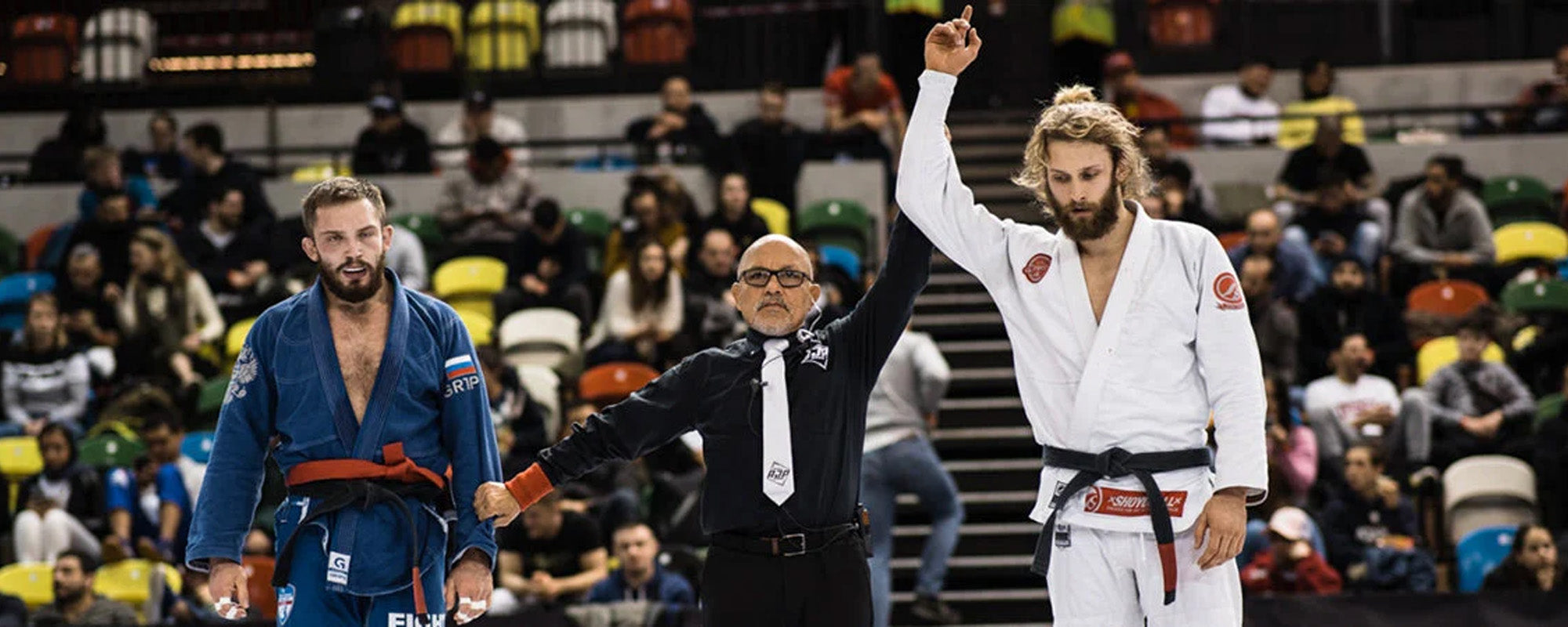Combat sports involve techniques and moves that prove to be harmful to opponents and practitioners. So, there is no exception in the case of BJJ but the ratio of afflicted injuries is the lowest as compared to other striking martial arts. Some BJJ moves have a high potential for danger. Even the simplest choke or submission can be dangerous if a grappler chooses to resist despite submitting. However, a number of BJJ chokes and moves are highlighted due to the high possibility of potential injury, this is the reason why BJJ coaches always suggest submitting when caught in any dangerous submission. In this article, we will discuss some dangerous submission techniques that must be avoided by grapplers.
Table of content
1. Dangerous BJJ Submissions
All submissions in the BJJ prove to be lethal when grapplers don’t tap out. For instance, resistance in an armbar can dislocate the arms. Powerful execution of dangerous moves in BJJ becomes the source of huge damage on the mat. The grapplers who are on their way to getting the black belts should consider the safety measure before the application, execution, and defense against dangerous submissions.
I’ll enlist the top Jiu-Jitsu submission techniques that may leave the grapplers totally defenseless on the mat.
1.1. Kimura

Masahiko Kimura, a Japanese Judo athlete first time used the dangerous technique of arm twisting in one of his famous fights. The powerful arm twist by Masahiko Kimura broke his opponent's arm. So, the dangerous arm twists submission gets its name from its initiator and is known as “Kimura”.
How to Apply Kimura Lock?
Kimura's submission technique can be initiated from the close guard, by sweep, or by simply twisting the opponent’s arm. Now we discuss how kimura can be applied from the close guard. To apply successful submission you have to be sure that the hands of your opponent are on the mat. For this purpose, pull your opponent towards yourself while maintaining a close guard.
Now grab the rib of your opponent by thumb hold and lock the shoulder joint with your second arm. This strong grip around the opponent's arm forced him to tap.
How Kimura Becomes Harmful?
Kimura is dangerous for the shoulders and arms of the BJJ grapplers. Kimura lock applies heavy pressure on the shoulders of BJJ athletes and becomes the cause of shoulder dislocations and torn rotator cuffs. The grapplers who are not ready to tap out the kimura, often end up with severe wear and tear in muscles, ligaments, and even dislocated and broken arms.
How to Avoid Kimura Submission?
Kimura lock is one of the most difficult moves to apply as well as to escape. To escape, you'll need to spin around your opponent such that your head is no more in the opponent's control. If you don't place your elbow on the ground right away, this posture might lead to armbar attempts by the other person. However, you can also escape it by bending and twisting the legs in your direction.
1.2. Heel Hook Submission

The heel hook is among the top deadliest Jiu-Jitsu submissions. It was banned by the International Brazilian Jiu-Jitsu Federation due to the capacity of inflicting permanent damage to the grappler’s heels and knees. However, in 2021 IBJJF revived it in Jiu-Jitsu for only No-Gi competitions.
How to Apply Heel Hook Submission?
You have to control the feet of your opponent before applying heel hook submission. You can build powerful control on the feet of your opponents with a strong triceps or armpit grip.
How Dangerous is Heel Hook Submission
The heel hook involves twisting the feet of BJJ athletes. This submission exerts immense pressure on the ankle which can damage the feet and knees of grapplers. It causes severe pain in the pelvis, thighs, and knees mostly because of injured ligaments.
Too much pressure from the opponent can damage the lower body of the BJJ fighters. The major ligaments that can be damaged during heel hook submission are MCL (Medial Collateral Ligament), LCL (Lateral collateral Ligaments), and ACL (Anterior Cruciate Ligaments).
How to Avoid Heel Hook Submission?
In heel hook, leg and knee are in the control of the opponent and the best way to escape from it is by holding a strong grip on the hip joint of the opponent. As your opponent sweeps your leg with a heel-hook setup from the bottom, begin by moving away, going with the way they're unwinding your knee, forcing it to bend inward. Before delivering a "marching band knee" (or Muay Thai knee) while pointing your toes, spin 180 degrees around completely. If your toes aren't pointed, your foot will become trapped on its leg when you try to withdraw. To re-engage your companion, spin back in.
However, when intense pressure builds on your leg or heel while caught in a Heel Hook. So the wise step is to tap out and roll again.
1.3. Gogoplata Submission

To wiggle out from the powerful attack of gogoplata is a tough row to hoe. The grapplers can execute this choke from the guard position among many others
How to Perform Gogoplata Submission?
It occurs when a fighter places his shin over his opponent's neck and then presses the opponent's head with his arms over his shin to finish the submission. Gogoplata submission can be applied by establishing the rubber guard, close guard, and from the mount position.
Why is Gogoplata a Dangerous Submission?
Gogoplata submission restricts the airflow from the windpipe and if resisted it will result in the unconsciousness of BJJ fighters. Now, let’s see how gogoplata can restrict the breathing of fighters. In this choke, immense pressure is applied on the fighter’s neck and if the neck is pulled downwards it will stop the flow of air through the windpipe altogether. A continuous low supply of oxygen may lead to the death of a BJJ fighter.
How to Avoid Gogoplata Submission?
Although any posture in BJJ allows for an escape, it is not recommended to think about escape until the submission has been "locked up". However, you can turn gogoplata to omoplata to escape from this lethal attack.
1.4. Rear Naked Choke

This strangulation technique of BJJ can be applied from the back of the opponent. This is also called the blood choke of Jiu-Jitsu which proves to be painful and lethal if executed properly.
Why is Rear Naked Choke Submission Dangerous?
The main target of this lethal submission is the carotid arteries that are responsible for taking oxygenated blood to the brain. After the successful execution of a rear naked choke, the brain of BJJ enthusiasts gets deprived of oxygenated blood. This situation can cause the unconscious state and even the death of a fighter.
How to Avoid Rear Naked Choke Submission?
Rear naked choke can be avoided by pushing your chin into the crease of the opponent’s arm. Although it’s difficult to defend against the attempt of a rear naked choke, your prompt action by keeping an eye on the minor mistake of your opponent can help you to escape the submission.
1.5. Flying Scissors Takedown

The name of this submission shows that it involves the scissoring movement. It involves the scissoring motion of the legs to take down the opponents in BJJ. Flying scissors can be applied in two forms. In the first form, both of your legs are targeted by your opponent. The other way to set up flying scissors is by targeting the lead leg (the leg that is next to you). After successfully applying the flying scissor, you can apply either a heel hook or leg lock or whatever you want.
Why Is Flying Scissors Submission Dangerous?
Takedown techniques like flying scissors and Lapal drag are proven to be effective in the BJJ to secure the win. The main weapon of a flying scissor takedown is your knee. However, it can affect the knee bone and muscles of BJJ practitioners. It can also cripple the knee of the initiator and if not applied precisely can damage the knees of grapplers for a lifetime.
How to Avoid Flying Scissors Submission?
Flying scissors takedowns can be avoided by keeping eye on the moves of the opponent’s legs.
1.6 Neck Cranks Submission

The neck is a fragile part of the body that hardly bears strong pressure. However, in the neck cranks submission, the main targets are the spine and neck of BJJ practitioners. Its prolonged application can break the neck joints of BJJ fighters. However, it also causes spinal injury that can affect all limbs and ultimately leads to paralysis.
How to Avoid Neck Crank Submission?
Neck cranks not only cause bad injury on the mat but also prove to be lethal. So, whenever you are under a powerful neck crank attack, tapping out would be a wise choice.
1.7. Twister Submission

Twister submission is considered one of the deadly BJJ and MMA submissions. Eddie Bravo from 10th Planet Jiu-Jitsu is credited with the creation and mainstream adoption of this peculiar yet highly dangerous submission. This submission attack can be initiated from the back control. The pressure is applied to the neck while twisting the whole body in the opposite direction and putting pressure directly on the spine.
How Dangerous is Twister Submission?
Twister submission is applied in the UFC by Jang Chan (Korean Zombie). The Twister Submission is so dangerous that IBJJF has banned the use of twister and all variations of spinal locks in its events.
How to Avoid Twister Submission?
Most grapplers take entry for Twister by strangling one leg in a triangle from the back position, be mindful of that. If your leg is caught in a triangle, your best chance is to make sure your opponent’s hands won’t find a grip around your neck. Or you can turn into your opponent’s half guard for escaping the Twister Submission attack.
2. Tips to Protect Yourself from Harm in BJJ
BJJ practitioners should protect themselves from the long-lasting effect of dangerous BJJ submissions. There are some essential techniques that must be followed by BJJ fighters to stay in the safe zone
- Tap out when caught in a bad submission as Conor McGregor did against Khabib in UFC 229.
- Incorporate strength training into your daily exercise routine, It will help the grapplers to withstand dangerous submissions.
3. FAQs
3.1. What are the Hardest Submissions to Defend and Get Out of?
There are various techniques that can be difficult to escape in BJJ. However, the hardest submission techniques include Kimura, Gogoplata, Anaconda Choke, Omoplata, etc.
3.2. What Moves are Illegal in BJJ?
The International Brazilian Jiu-Jitsu Federation prohibited some of the moves or techniques which included slamming, biting, eye-gouging, hair pulling, twisting of knee locks, and any kind of cervical neck cranks.
3.3. What Bones Does a Kimura Break?
Kimura's submission affects the three joints including the elbow, shoulder, and humerus (Upper arm bone). If resisted, it can break the arm of the grapplers.
4. Takedown
Dangerous BJJ submissions can cause long-term and serious injuries. All the above BJJ submission techniques also have a detrimental effect on the health of BJJ fighters and can stop them from going on the mat. However, grapplers can protect themselves from the lethal effects of BJJ submissions by taking wise steps and using their elite defensive skills on the mat.













Leave a comment
This site is protected by hCaptcha and the hCaptcha Privacy Policy and Terms of Service apply.